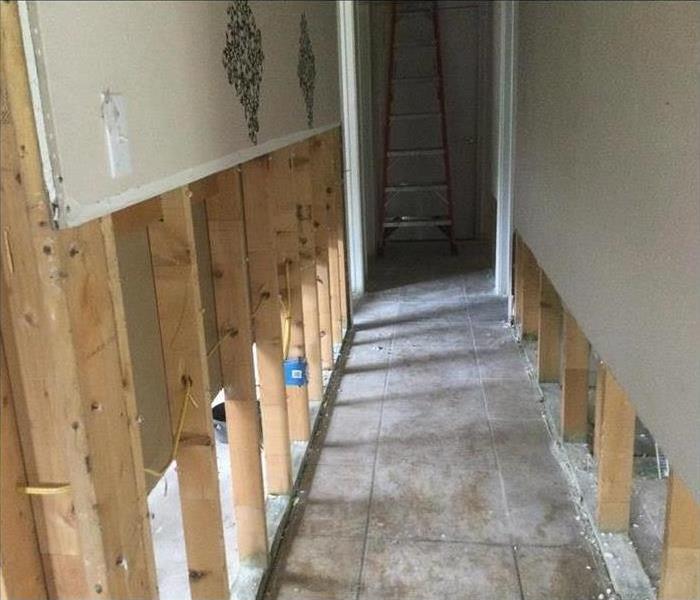What are Flood Cuts?
8/27/2022 (Permalink)
Whether you’re dealing with flooding for the first time in San Antonio, TX or you’re a veteran storm survivor, there’s always something new to learn. While reading about restoration options, the term “flood cut” may have peaked your interest. Here’s why professionals consider it an essential mitigation technique.
Damage Isn’t Always Obvious
Once a storm has passed and you survey the wreckage, it’s easy to see how high the water level reached. Before you start the demolition stage, though, it’s important to consider a subtle aspect of tear out projects. In the case of drywall, the flooding was likely wicked up well above the visible dirt line. That’s why the standard flood cut for discarding damaged walls is 12 inches above the high water mark.
Amplifying Your Circulation Area
Even after the waters have receded, you’ll need to work fast to get rid of excess indoor humidity. Those who don’t act decisively risk dealing with widespread contamination and greater repair costs. For this reason, your cleanup and restoration company will put an air movement plan into place. To decide how many fans are needed, where to place them and at what velocity they should be run, a professional will calculate an evaporation rate based on the following parameters:
- Current ambient humidity
- Wet material temperature
- Air movement across moist surfaces
- Water vapor pressure differential
- Wet surface accessibility
By using flood cut to open walls well past the water line, you’ll be in a better position to prevent additional damage to structural members and utilities that were left vulnerable by the storm and its aftermath. It’s also part of the process of removing unpleasant odors from your building.
Take Back the Control
Although you may have done everything in your power to take the needed precautions, flooding makes it necessary to work incessantly to get your site back into shape. Extended cuts are key to doing a thorough job to make your facility look and smell like new again.





 24/7 Emergency Service
24/7 Emergency Service
